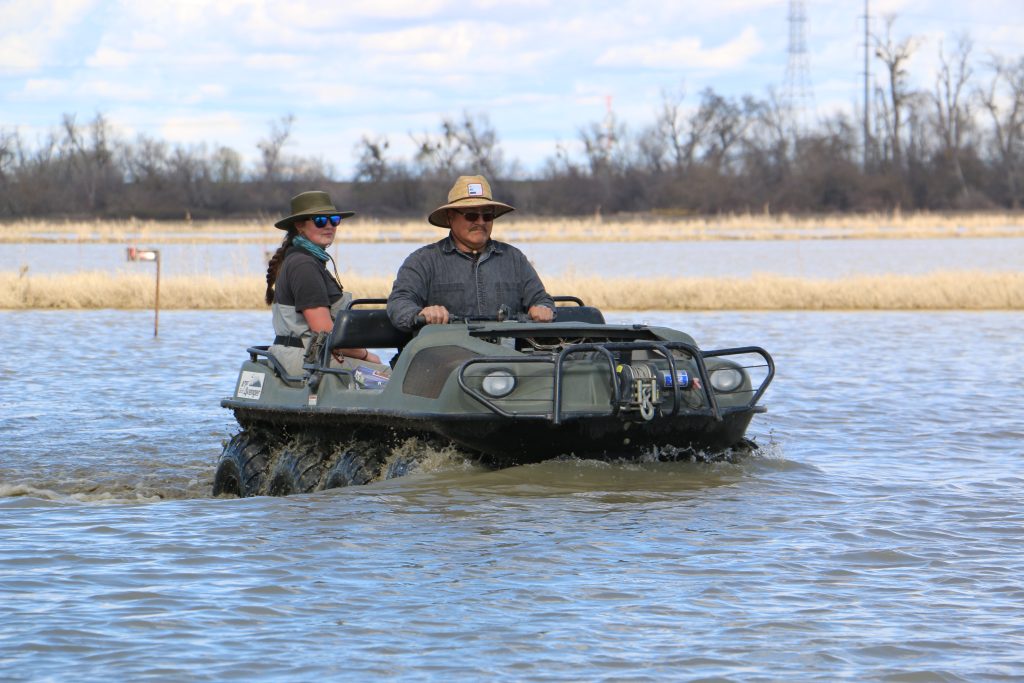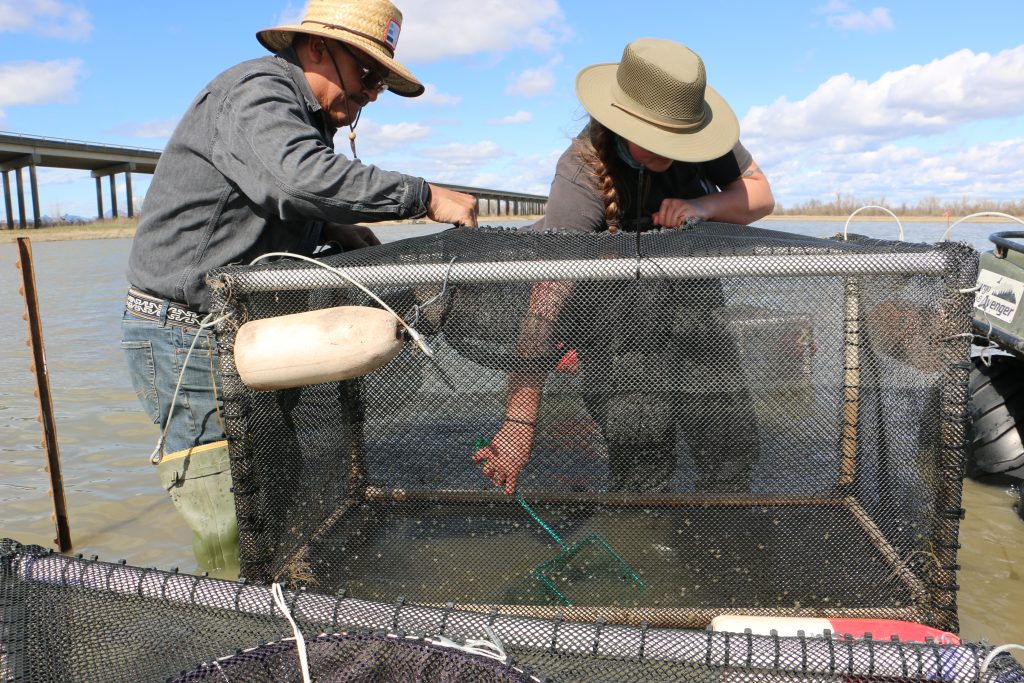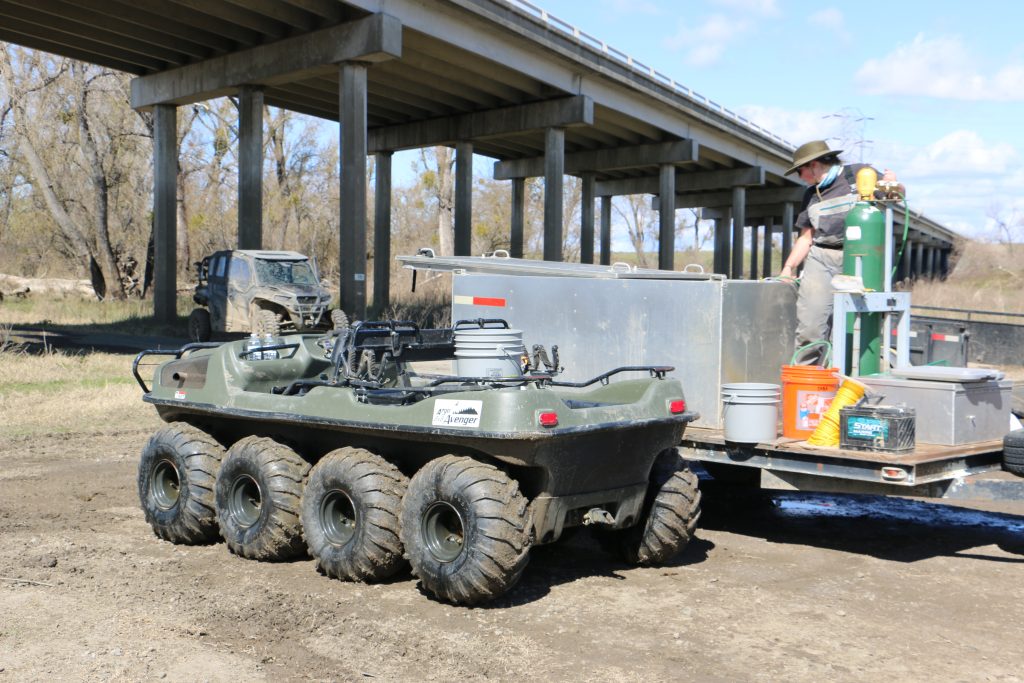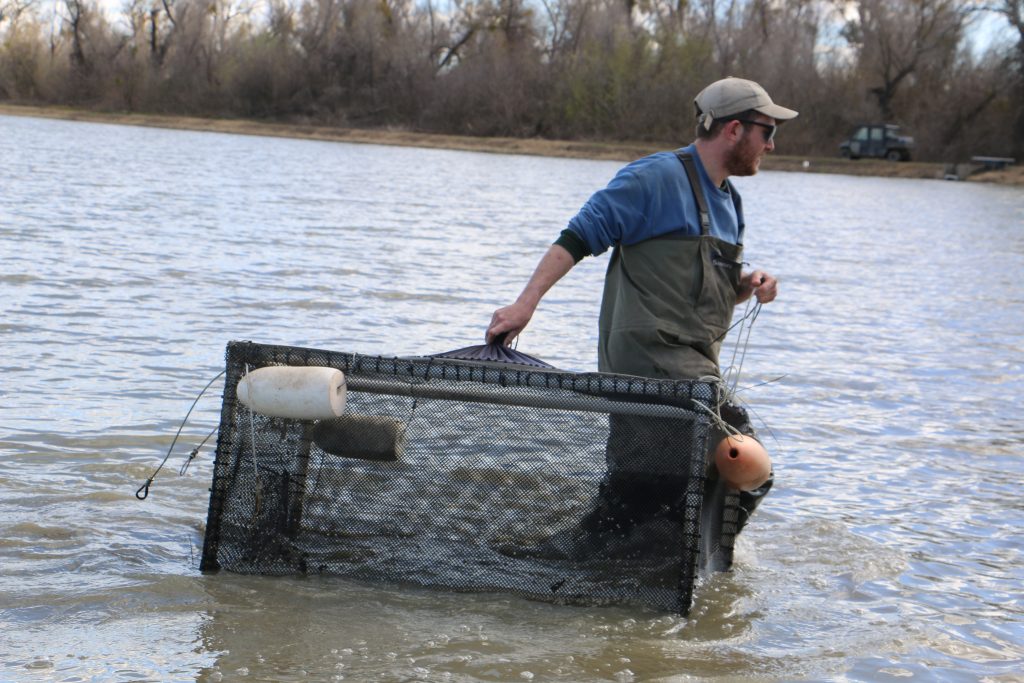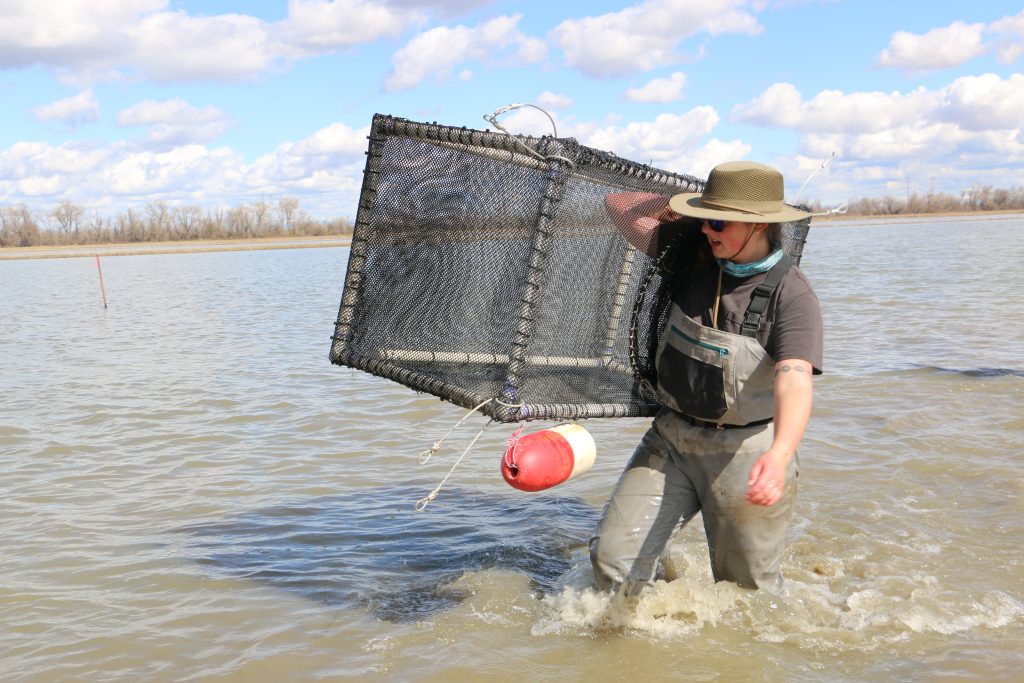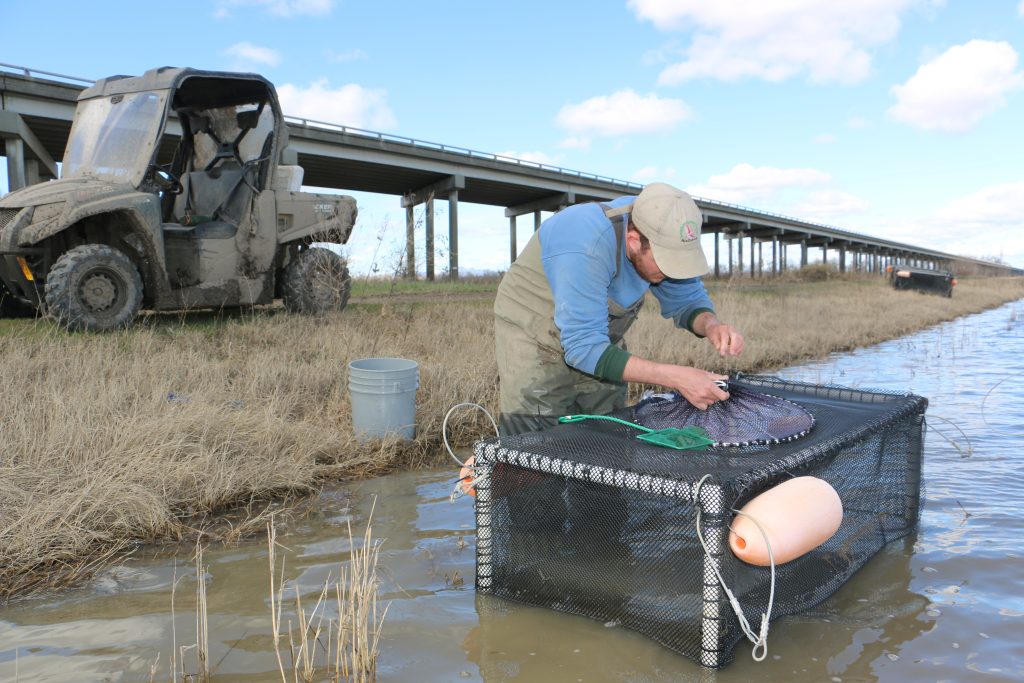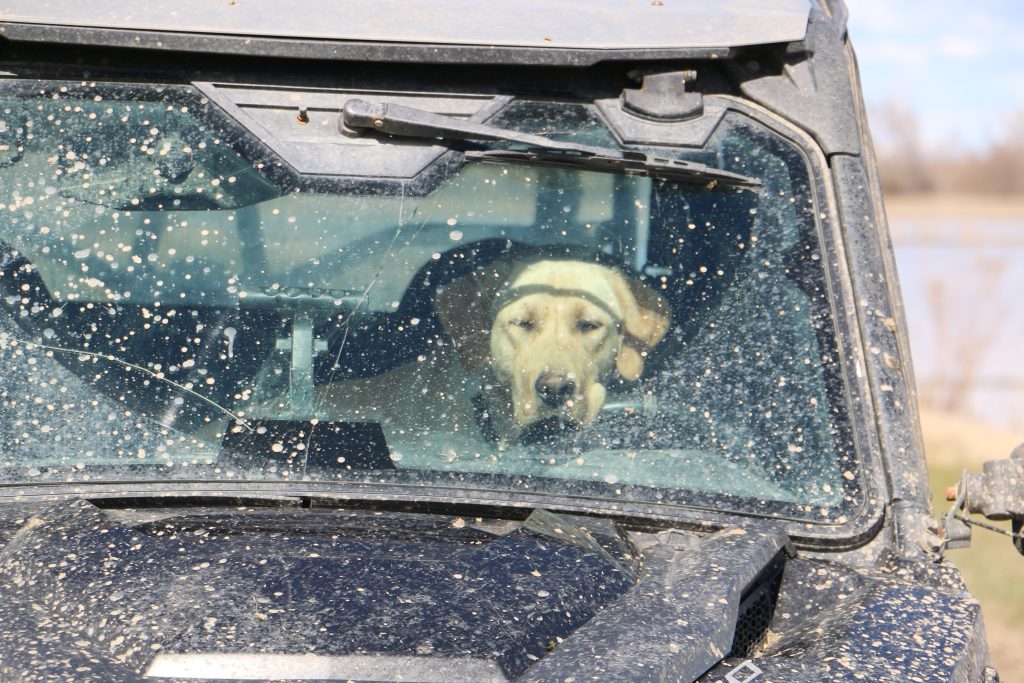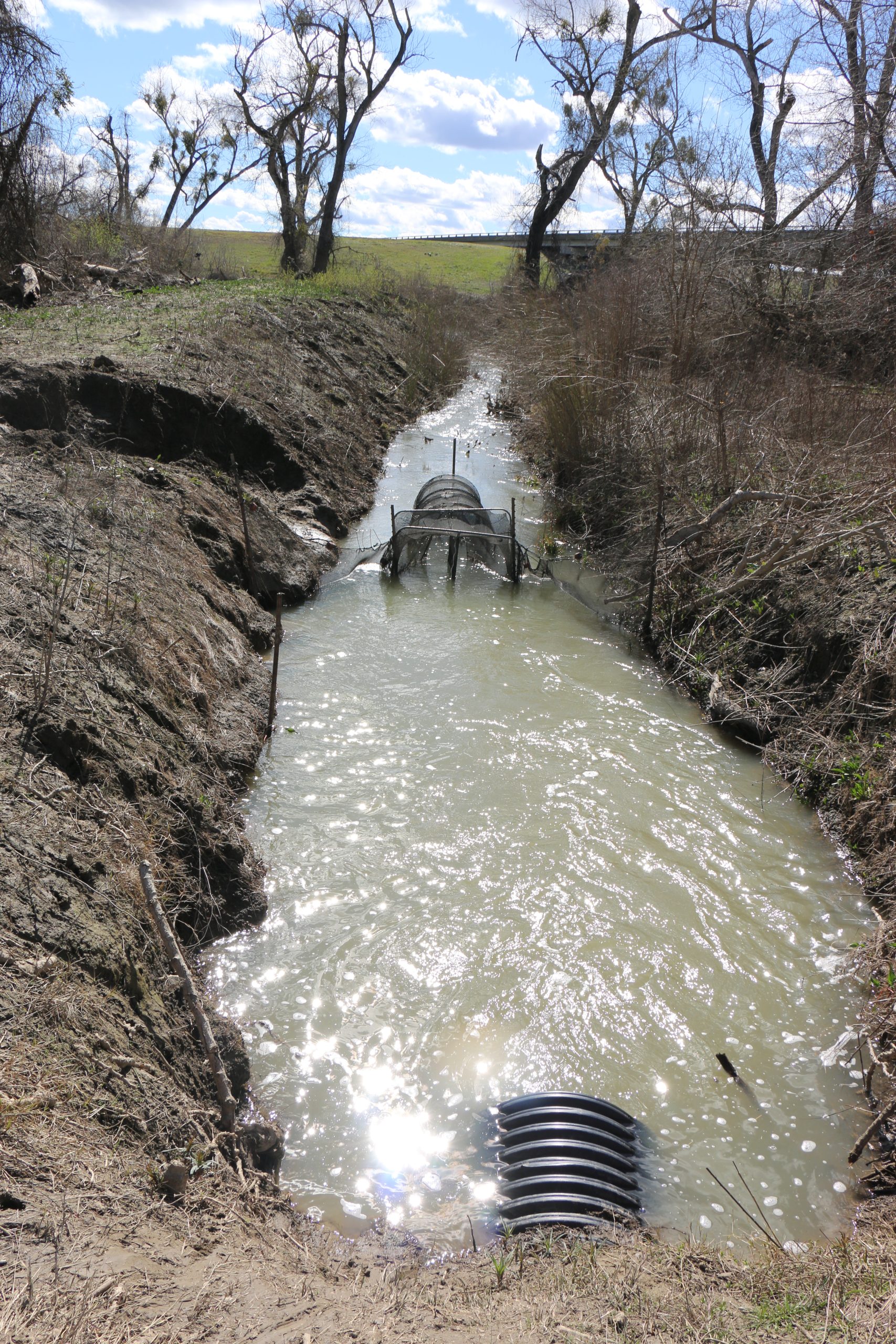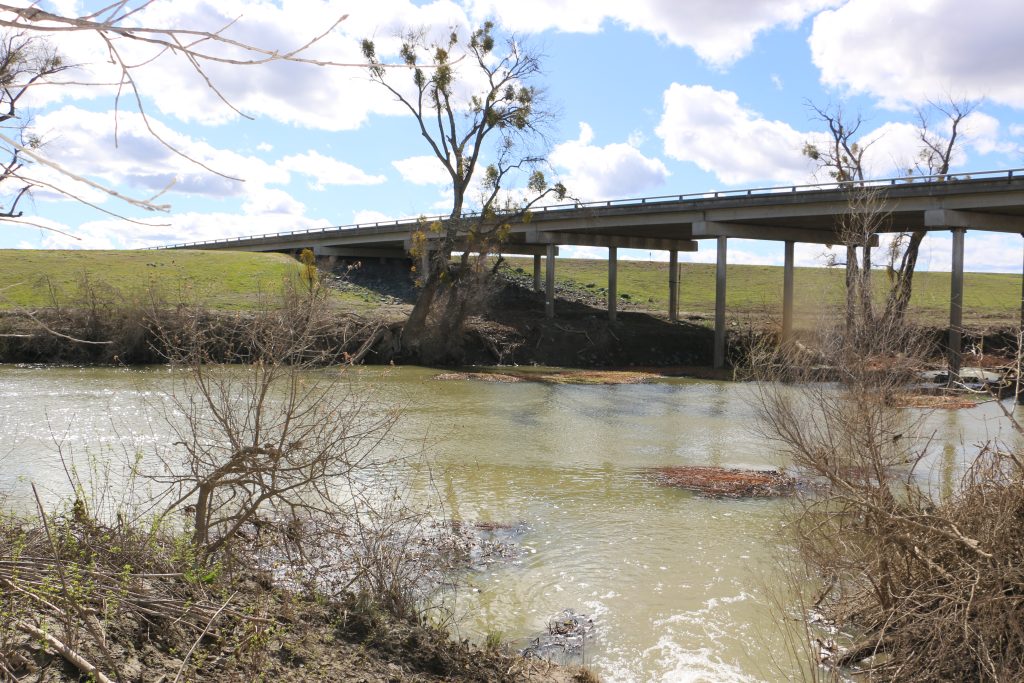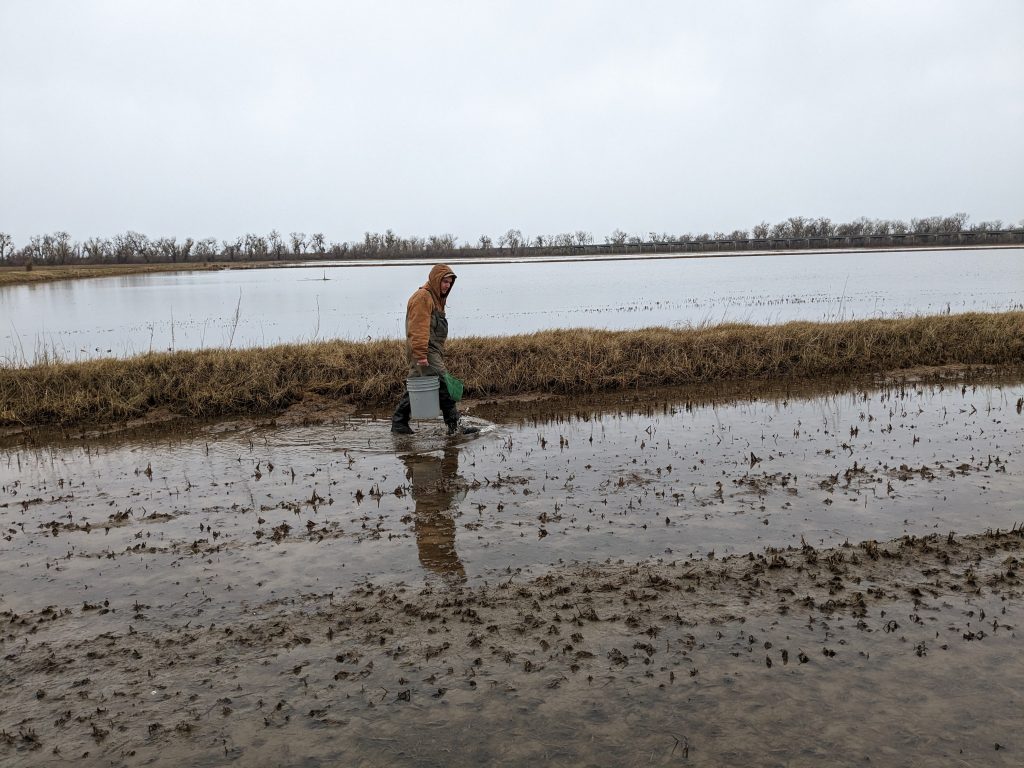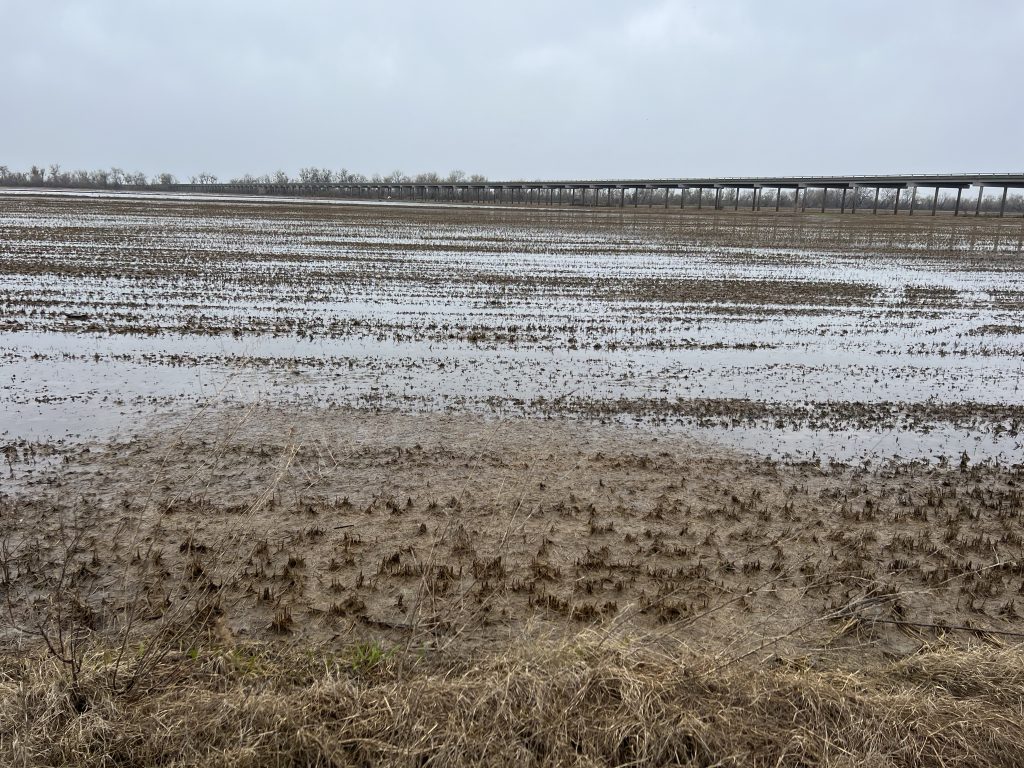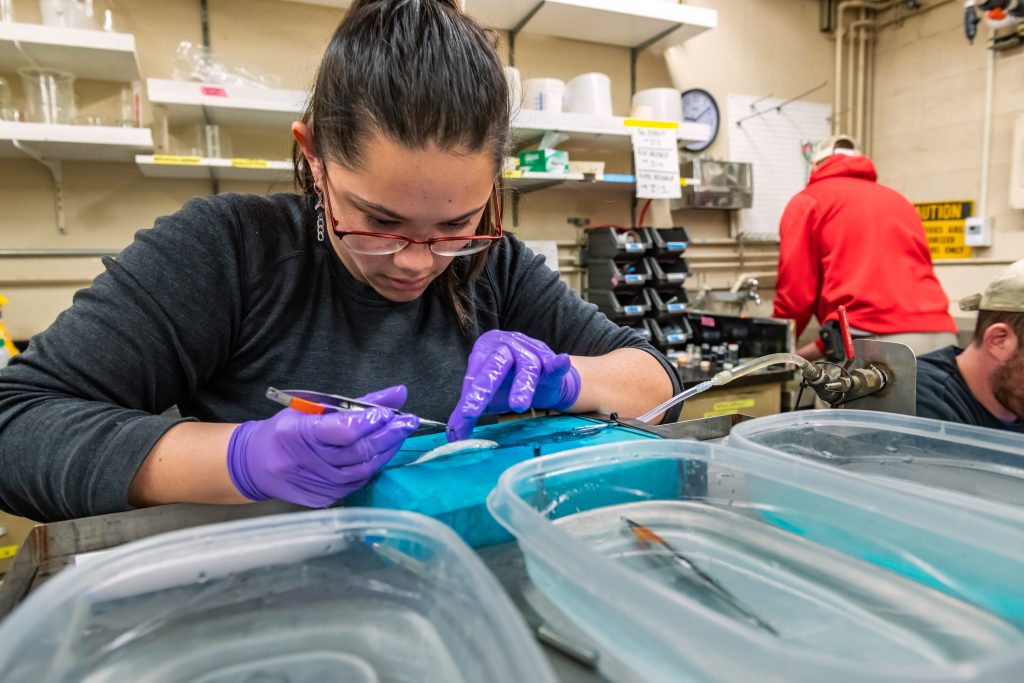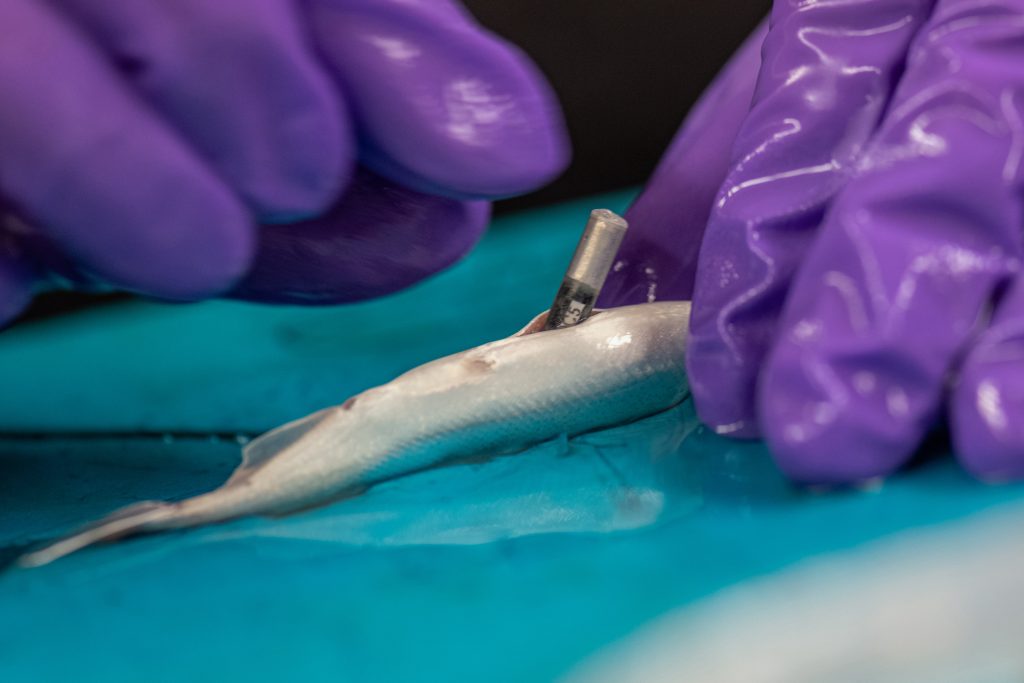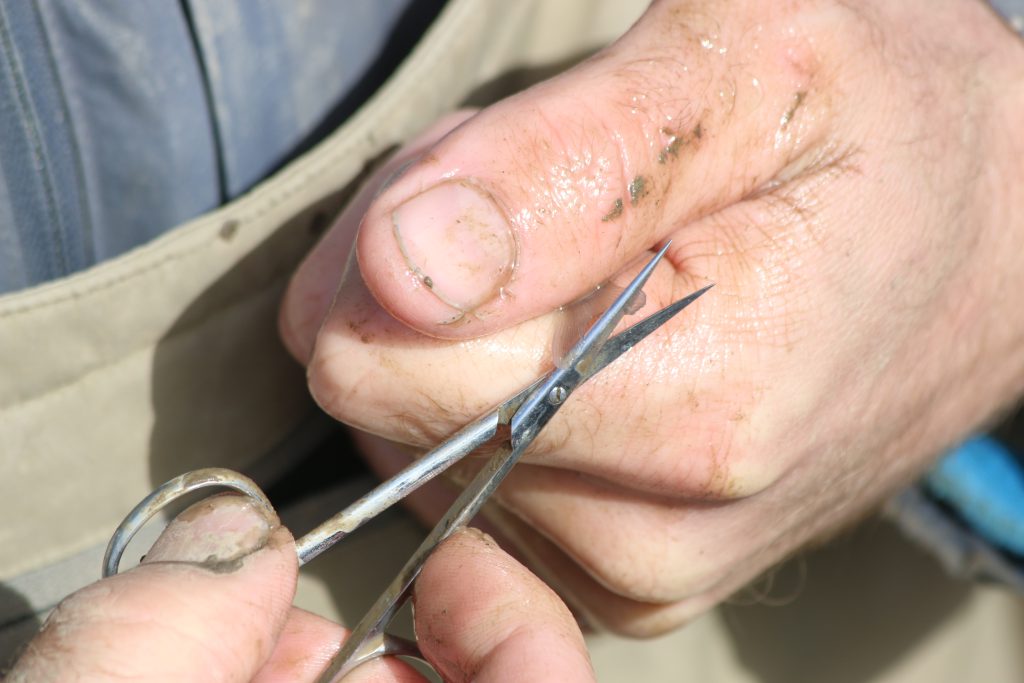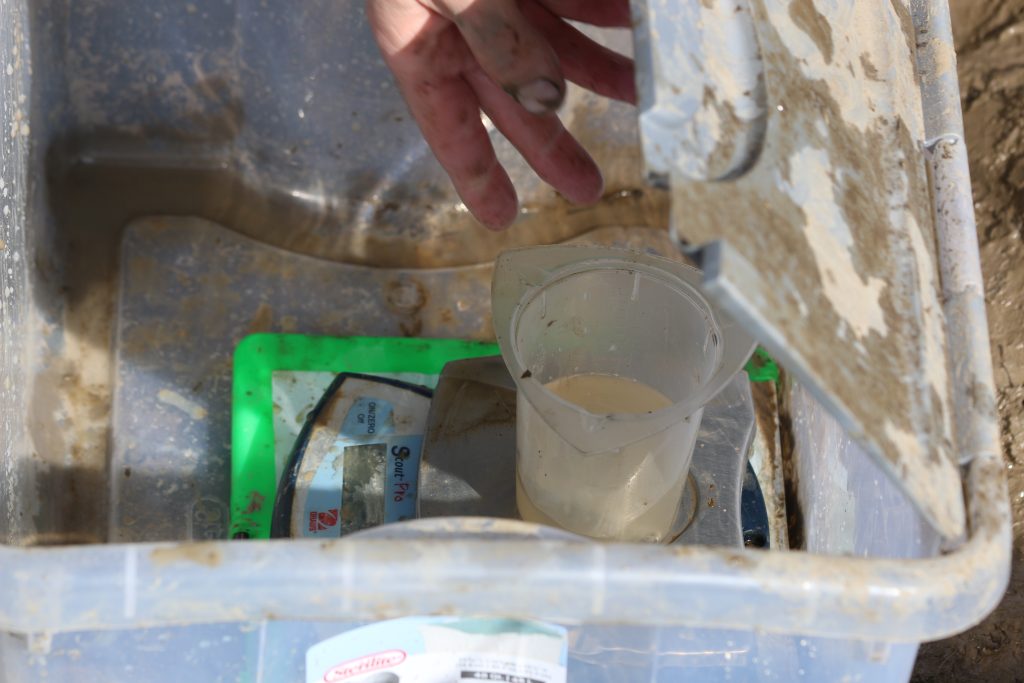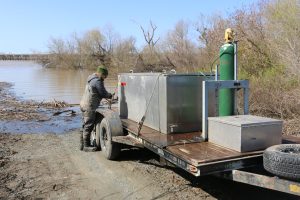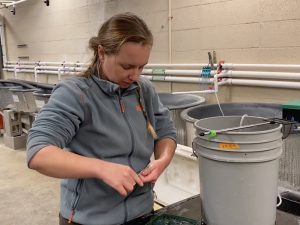Breaking News: Sudden Change of Daily Activities
This week started out fairly hectic as we learned on Tuesday, March 8 that the Sutter Bypass was expected the run again starting late-Friday night, March 10. Beginning March 8, this initiated a flurry of activity to prioritize field draining and removal of caged fish to relocate them to the UC Davis Lab for JSATS (telemetry) tagging there instead of out at the project field as originally planned. More details on this in the Activity Updates section below.
Updated Catch Numbers
As of March 9, we had captured over 425 fish via trap net and seining. Based on size chart assessments, these include 116 wild fall run-sized, 1 late-fall run-sized, 10 winter run-sized, and 38 spring run-sized Chinook salmon. On March 10 (the date of this email), many more wild fish were counted but I do not have these numbers to report out at this time. Overall mortality has been low. About 3.1% (13/425) mortality of all fish encountered so far with fyke and seine. All of these were dead when we encountered them, no fish have died during or shortly after our handling that we have seen. Of these, 5 were PIT-tagged hatchery fall-run salmon, 4 wild fall run salmon, 1 shad, 2 mosquito fish, 1 sunfish.
What is notable about these numbers is the sudden increase in the spring run-sized salmon count which increased by 31 upon the first fyke check after initiation of drainage on March 9. This is a very interesting result, and the UC Davis Fieldwork Leader offered the following thoughts on this: Intuition says that the 31 “spring run sized” salmon are actually fall run fish which are larger than expected due to floodplain rearing. Reminder: All wild fish collected are also genetically tested for final confirmation of run classification and final accounting will be adjusted accordingly after this analysis is completed.
General In-field Activity Updates
As mentioned, tremendous effort began the morning of March 8 to get all the caged fish out and off to the lab. This was done in a single day with a full contingent of the UC Davis Team plus some extra help provided by “volunteer” rice growers and their equipment to help get the job done as quickly as possible. It was essentially a bucket brigade out there to tediously get all the fish out using buckets, fish nets, ice chests and ATV’s. Several photos attached help to tell the story. In addition, the bottom drain was adjusted to allow a maximum amount of water to exit the field while also maintaining the fyke net. All went well and by the end of the next day (March 9) the top check was nearly completely dewatered and searched for any stranding of salmon (which is not expected based upon previous observations). Only one dead fish was found and it was a largemouth bass.
General Lab Activity Updates
Early in the week, the UC Davis Team did all the JSATS-tagging of 350 lab-reared salmon. The UC Davis Team had begun the process of JSATS-tagging the rice-reared fish in the lab. As of the end of March 9, about 190 of these fish had been tagged.
Looking Out
We were obviously hoping the Tisdale Weir overtopping event might be milder than projected. We tried to beat the clock to count as many natural-origin and PIT-tagged salmon remaining in the field as possible to finish off what has been a fairly good field season except for the impacts of the slower fish growth resulting from the recent unseasonably cool weather. Still, the UC Davis Team was committed to getting as much counting done as possible until the field became reconnected with the second round of bypass floodwater flows. Ultimately, floodwaters began to overtake the field by the afternoon of Saturday, March 11 leaving number of both our PIT-tagged and natural-origin salmon left uncounted.
